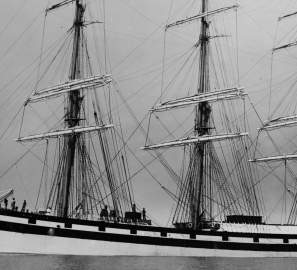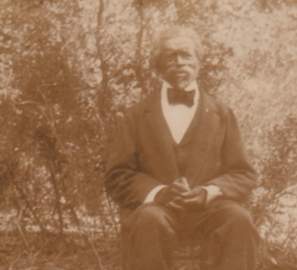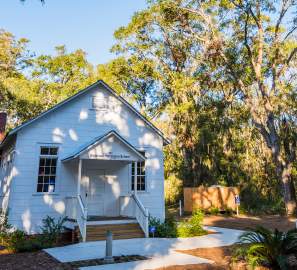African-American Heritage in the Golden Isles
Following the Revolutionary War, fourteen working plantations were established on St. Simons Island. Additionally, several plantations along the tidal marshes of the Altamaha River and on the mainland in Brunswick, were established for the cultivation of cotton and rice with slave labor.
The slaves brought over from West Africa by way of the Caribbean brought the knowledge of rice production from their homelands and provided significant labor to transform swamps into rice and cotton fields. They also brought the songs, language and traditions of their various African tribes. After emancipation, the descendants of the slaves from coastal plantations such as Cannon’s Point, Retreat, Hampton Point, and Hofwyl, settled into their own communities where they kept their African traditions alive. Churches, cemeteries, and home sites can be found throughout the Golden Isles.
The songs sung by workers in the fields, by boatmen on the waters, by stevedores at the docks, and by domestics washing clothes made their way to archives at the Library of Congress. The Georgia Sea Island Singers have preserved their heritage and shared their songs across the U.S. and the world. For nearly thirty years, the Georgia Sea Island Festival (held annually in June) has celebrated the African-American music, food, and crafts of the coastal barrier islands.
The Golden Isles is part of what is known as the Gullah Geechee Cultural Heritage Corridor, which has been designated and recognized by an act of Congress to memorialize the significant cultural and historical African-American contributions from this area. For more information about the Gullah Geechee Cultural Heritage Corridor, please click here.
We are proud to be called home to these important trailblazers in the African-American community:
- Deaconess Anna E.B. Alexander, the first African-American ordained as a deacon in the Episcopal Church in 1907.
- Robert S. Abbott, founder of The Chicago Defender, which became the most widely circulated black newspaper in the United States in the early 1900s.In 1929, the Abbott Monument was commissioned and now stands at Fort Frederica National Monument.
- Bessie Jones, a member of the famed Georgia Sea Island Singers, a musical group that traveled the country sharing the songs and stories passed down from generations.
- Jim Brown, running back for the Cleveland Browns, who was inducted into the Hall of Fame in 1971.
During your visit in the Golden Isles, be sure to explore these various sites, which have played a significant role in our African-American history:
- Historic Hamilton Plantation Cabins and Grounds
- First African Baptist Church
- Hofwyl-Broadfield Plantation
- Harrington School House
To learn more about local efforts to protect our area’s African-American heritage, please visit the Coastal Georgia Historical Society, the St. Simons African American Heritage Coalition and the Coastal African American Historic Preservation Commission.
These highlights are by no means intended to fully represent the complete scope of African-American cultural heritage in the Golden Isles of Georgia. If you have information regarding our area’s African-American heritage, please contact us so that future literature on this subject may be more complete.








